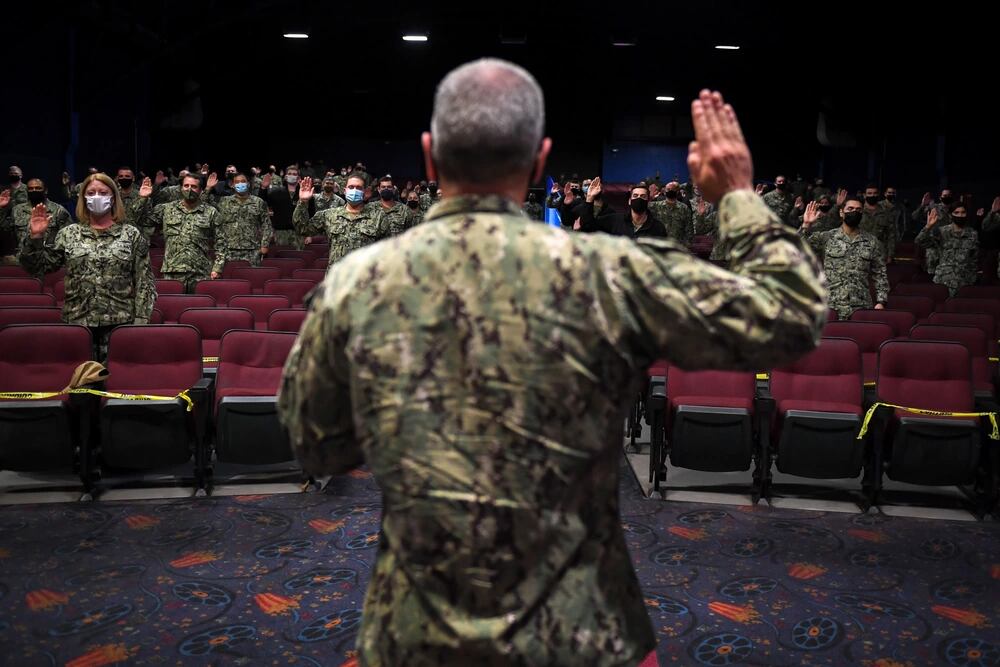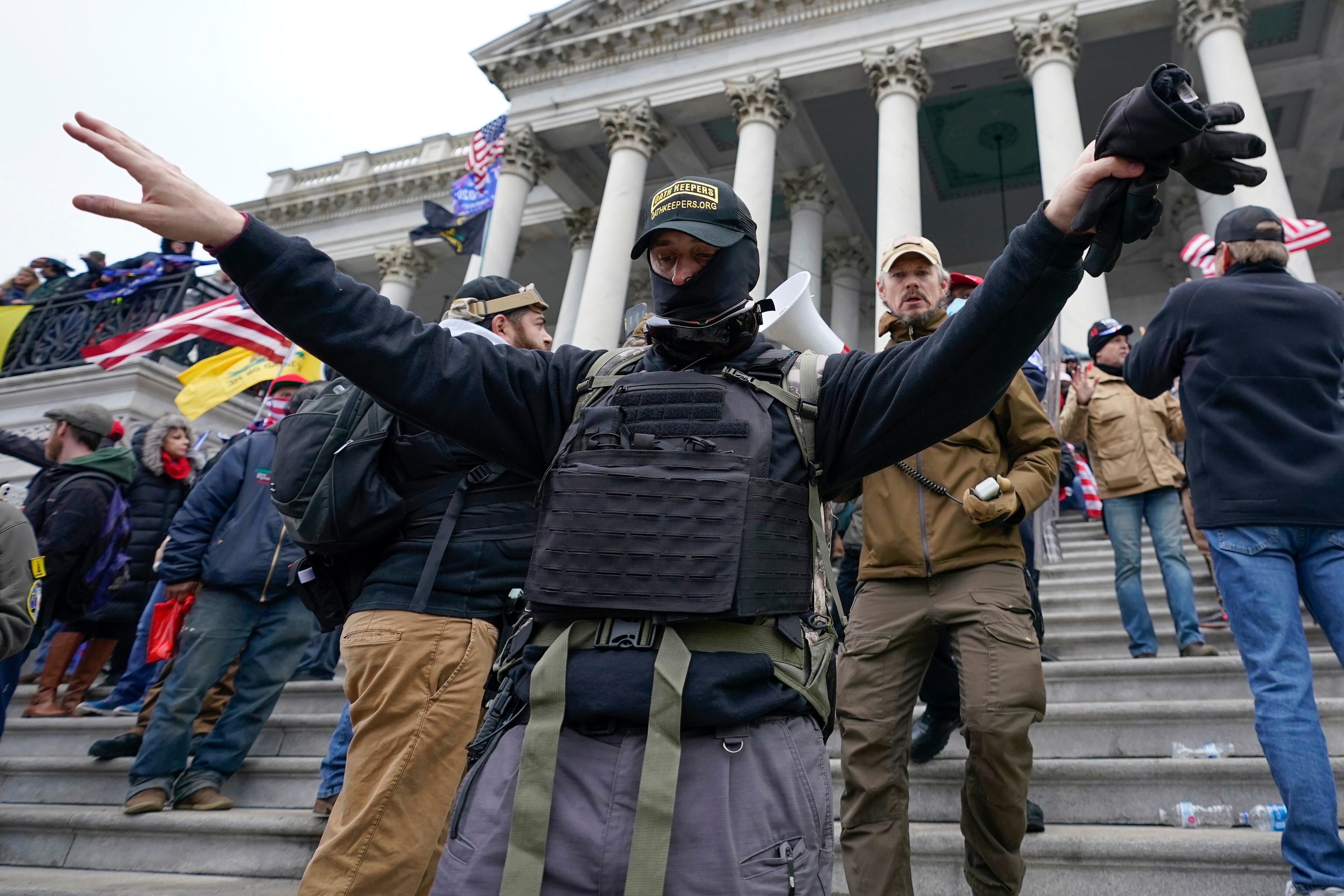Domestic extremists who plot or commit mass killings often share characteristics, like mental health problems and criminal histories. But the most common thread is a record of military service, according to new analysis of three decades of attacks inside the U.S.
The National Consortium for the Study of Terrorism and Responses to Terrorism, known as START, analyzed thousands of cases of extremist-driven crimes from 1990 through 2022, and found that a military background is the single strongest predictor of whether a perpetrator committed or planned a mass casualty attack – and their military training made them twice as deadly, according to research first made available to Military Times.
“We thought having a criminal history or undiagnosed mental illness were the things that would come out as distinguishing the mass casualty offenders. Those matter, but the thing that came out as being the most significant predictor was having a military background,” said Michael Jensen, a senior researcher at START. “That was surprising and alarming and runs counter to what decades of criminological research would have you believe about who’s most likely to engage in this type of activity.”
The research underscores the importance of combating extremism in the military community at a time when those efforts are facing political pressure. The findings are at odds with arguments made by many Republican lawmakers who contend that anti-extremism training is unnecessary and tarnishes the military’s image. The new study also lends more context to a recent Rand Corporation survey that concluded veterans are no more likely to harbor extremist beliefs than the rest of the U.S. population. While that research asked veterans about their ideologies, START’s analysis was based on the actions of veterans and service members who committed extremist-driven crimes.
From 1990 through 2022, 451 people with military backgrounds committed extremist offenses. Of those, 170, or nearly 38%, either plotted or followed through with a deadly terrorist attack.
— START
The study found that from 1990 through 2022, 451 people with military backgrounds committed extremist offenses. Of those, 170, or nearly 38%, either plotted or followed through with a deadly terrorist attack. Those account for one-quarter of all mass fatality extremist crimes during that period.
The number of violent extremists among the overall veteran and military population is small, but this group has an outsized impact once radicalized, Jensen said. Offenders with military backgrounds were 2.4 times more likely to be classified as a mass fatality perpetrators than extremists who didn’t serve in the armed forces, and the military-trained offenders were almost twice as likely to be successful with their plots. About 9% of plots planned by veterans resulted in four or more deaths, compared to 5% of successful attacks carried out by other offenders, the study found.
Jensen and other researchers made the discovery while looking through a database of more than 3,000 crimes to understand what characteristics separated the people who went on killing sprees from other types of criminal extremists. The research was funded by the Department of Homeland Security and done in collaboration with We The Veterans, a non-partisan nonprofit founded by veterans and military families. Co-founder Ellen Gustafson said the organization leads a working group to combat disinformation among veteran and military communities and will use START’s findings to launch extremism prevention programs.

We The Veterans’ work will include encouraging more veterans to become involved with veterans service organizations, which can provide them with a social group, as well as connect them to employment opportunities and mental health resources. Compared to veterans who committed other types of extremist-driven crimes, mass fatality offenders with military backgrounds had higher rates of unemployment, mental illness and affiliations with isolated extremist cliques, START’s study found.
“Seeing that there’s a potentially deadly outcome of more involvement by veterans in these extremist groups, it is imperative for us as a group of concerned citizens and also members of the veteran and military family community to try to do something about it,” Gustafson said.
The findings illustrated a “small numbers, high impact” problem, Gustafson said, adding that the study reveals why extremist groups tend to focus their recruitment efforts on people with a record of military service.
The study follows another recent report about extremism among veterans from the Rand Corporation. The think tank conducted a survey of 1,000 veterans and found no evidence that the veteran population holds more extreme beliefs than the rest of the American public — though its authors acknowledged that the results are limited by how many people were willing to be honest about their extremist stances.
And RAND did find that 19% of veterans said they supported political violence and 29% believe in the “Great Replacement” conspiracy theory, which contends that lenient immigration policies are being designed to replace the power and culture of white people in the United States. While those statistics are on par with the rest of the U.S. population, Jensen said this group’s beliefs are cause for greater concern because veterans account for higher rates of violence once involved in extremist movements.
“It’s horrifying because the Great Replacement theory has been the driving conspiracy theory behind these mass casualty terrorism events,” Jensen said. “I’m worried about everyone that supports the Great Replacement theory, but the veteran has the potential to be really, really impactful if they decide they want to do something.”
Of the 170 offenders with military backgrounds in START’s study, 78% were veterans, while just 22% were enlisted service members at the time of their crimes. Most of the crimes, about 65%, took place six or more years after the offenders had left the military. START defined mass casualty offenders as individuals who committed extremist-driven violence that resulted in injuries or deaths of four victims, as well as extremists who plotted those attacks but were foiled before carrying them out.
The majority of mass fatality offenders who served in the military were affiliated with far-right domestic extremist groups and movements, including Aryan Nations, the Ku Klux Klan, the anti-government Oath Keepers and the neo-Nazi Atomwaffen Division, among others, START’s study found. About 74% of offenders were affiliated with those groups, while 15% were inspired by or connected to foreign Islamist extremist organizations.
To counter extremism in the ranks, the Defense Department created a Countering Extremism Working Group in 2021, which made a handful of recommendations, only some of which have been implemented. A Pentagon official briefed reporters last week that the department is working to implement training focusing on how the military’s core values run counter to extremist activities. The official spoke anonymously to describe the program.
The Pentagon did not respond to requests for comment from Military Times at publication time, after being provided an embargoed copy of the START research.
While the problem of extremism in the ranks has prompted calls for the Defense Department to bolster its trainings to prevent radicalization, the data indicates that more intervention is needed years after someone’s service ends, Gustafson said.
“It’s not so much falling through the cracks right when they get out, it’s the 6- to 10-year mark of being out that somehow they’re not interconnected enough to the veteran community to have those benefits of prevention,” Gustafson said. “Our way of looking at this now is, how can we create a net to make sure veterans are not falling away from their community and are susceptible to other nefarious groups?”
This story was produced in partnership with Military Veterans in Journalism.
Nikki Wentling is a senior editor at Military Times. She's reported on veterans and military communities for nearly a decade and has also covered technology, politics, health care and crime. Her work has earned multiple honors from the National Coalition for Homeless Veterans, the Arkansas Associated Press Managing Editors and others.
In Other News




